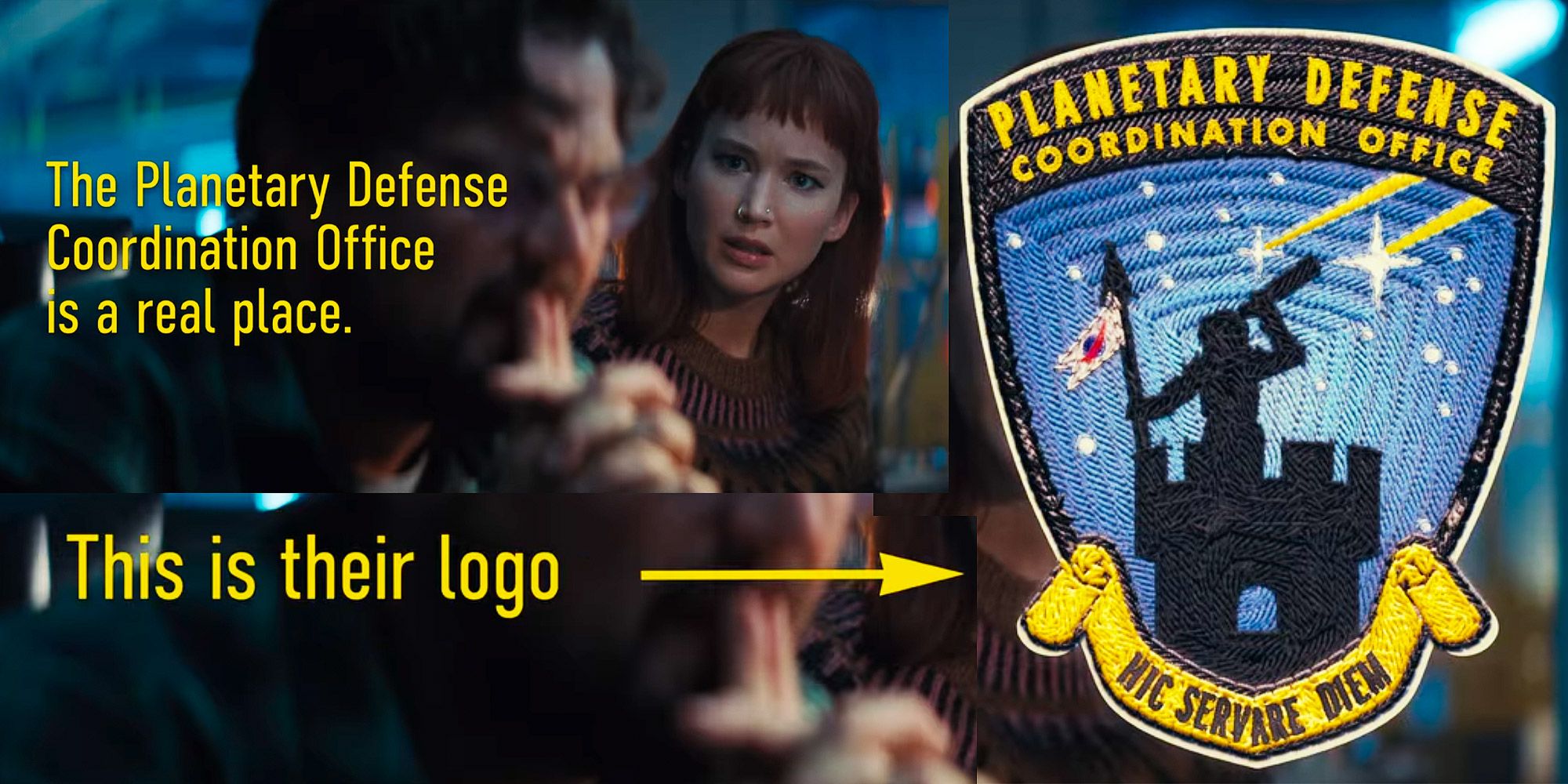Despiet playing a key role in the narrative, it's unclear whether The Planetary Defense Coordination Office featured in Adam McKay's Don't Look Up actually exists. In Don't Look Up, director Adam McKay's satirical look at a doomsday scenario involving an approaching comet, two astronomers, Dr. Randall Mindy (Leonardo DiCaprio) and Kate Dibiasky (Jennifer Lawrence) attempt to warn the planet about its impending strike in six months and 14 days, which would lead to an extinction-level event, but are met with indifference. The film has a number of things that are made up or stand-ins for real-world things, such as fake social media platforms, talk shows, and celebrities, all of which attempt to mimic their real-world counterparts to some degree, but there is some basis in fact, in terms of the organizations represented in the film.
The government organizations in Don't Look Up are mostly real, although obviously portrayed by fictional characters, such as the U.S. Government, NASA, etc. but the response to the news of the impending comet is where things get hazy (or downright ridiculous). Early on, Dr. Teddy Oglethorpe (Rob Morgan) is introduced as the head of the Planetary Defense Coordination Office (PDCO), who is referred from the Kennedy Space Center, where he confirms the threat of the comet and accompanies both Dr. Mindy and Dibiasky to D.C. to appeal to President Orlean (Merryl Streep). In the scene where they are referred to Dr. Oglethorpe, on-screen graphics pop up, saying "The Planetary Defense Coordination Office is a real place," before displaying their logo.
While it may seem like a joke, The Planetary Defense Coordination Office is, in fact, a real thing. The PDCO's main mission, as listed on the NASA website is "to manage its ongoing mission of planetary defense" which encapsulates "early detection of potentially hazardous objects" (or PHO's), "track and characterize PHOs and issue warnings of the possible effects of potential impacts, Study strategies and technologies for mitigating PHO impacts," and "coordinates U.S. government planning for response to an actual impact threat." In addition to those key characteristics, the PDCO also coordinates with space agencies of other nations in the event of a Near-Earth Object (NEO) posing a significant chance of impacting Earth, which is measured as having a greater than 1 percent over the next 50 years.
In Don't Look Up, the plan to deflect the comet is similar to plans to combat such a threat in films like Armageddon and Deep Impact, which is to launch a craft toward the comet in order to deliver a payload that would knock it off course. Of course, Don't Look Up's approach veers into satire, as the governments of the world, tech companies, etc. all get muddled up in trying to find a way to mine the comet for resources, rather than blow it up completely, saving all life on Earth. In real life, however, there are actually multiple plans, organizations, and systems in place to deal with such a threat, such as the Planetary Defense Coordination Office, which offer a more scientific, practical, and technologically-advanced solution than shown in Don't Look Up.
NASA recently launched their DART (Double Asteroid Redirection Test) which will deflect a non-threatening asteroid in order to study the effects, which is part of the organization's Asteroid Redirect Mission (ARM), which uses a robotic spacecraft to redirect asteroids, rather than a payload of nuclear weapons. Still, the Planetary Defense Coordination Office is very much a part of the world's response to an asteroid threat and their job is predominantly about finding and locating potential threats, similar to how they do in Don't Look Up, just in a much less satirical way.


